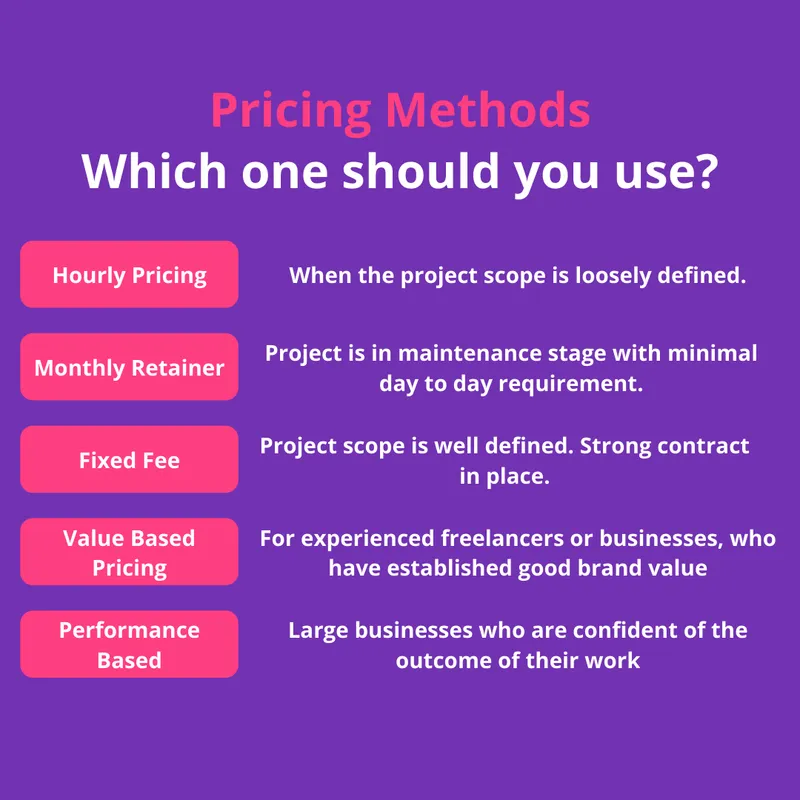Five pricing strategies for your services business: Advantages, disadvantages and when to use
The author weighs in on the pros and cons of various pricing strategies and the suitability of each vis-à-vis the nature of a given assignment.
You find a client, pitch him your offerings, he is almost convinced that he will go ahead with you for a service. He asks you the price and it rings a bell in your mind since you don’t know if you should maximise the opportunity. Even if you have thought of this, based on the previous projects, you might still be unsure whether this is the right price to quote considering your objectives from the deal.
Your objective from the deal might be different with each deal. At times you would want to maximise the profit, sometimes you would want to get that work and there will be times your main objective would be to win that client.
Your price should be based on your objectives which might not be maximising immediate-term profits all the time.
In this blog, we share some pricing strategies with you and also some broad guidelines on which pricing strategy should be used in which case.

Picture Courtesy: Refrens.com
1. Hourly pricing
Hourly pricing is one of the most common pricing strategies, especially for freelancers. Fundamentally, you trade time with money. The client will pay you for each hour you put in work.
Advantages
- Most clients understand this pricing structure. It is easy to explain to them.
- Works well when the initial brief is vague and the project scope or the schedule is unclear.
Disadvantages
- Earnings are limited by the number of billable hours in a week. You cannot increase your working time beyond a limit. So, the chances that you might hit the ceiling are high.
- It does not value productivity. In fact, it penalises you for being productive. If you finish your piece of work faster, you will be paid less.
- Your hourly rate becomes your price tag. Irrespective of the complexity of the project you will still be paid the same hourly rate. Impacts your positioning in the competitive space as well.
Hourly pricing can be used when the requirements are loosely defined and there might be a large deviation from the initially planned schedule and scope.
Landing a deal is tough. Strategies like hourly pricing can bear low returns for your effort in getting a deal. This post on how to land a deal in these times is a good read to crack new deals, especially in unprecedented times like these.
2. Monthly retainer
In a monthly retainer scheme, the client will pay you a fixed monthly fee irrespective of the amount of work in a month. There is a scope defined but the time required to complete it may vary. Sometimes there might be too much work with a monthly retainer client and sometimes, there might be no work at all.
Advantages
- One of the biggest advantages of a monthly retainer is that it generates a fixed revenue stream on a monthly basis.
- There is a shift in the focus. The focus is now on work rather than hours only.
- A monthly retainer is a result of a good client relationship. With the right deliverables, the relationship will only get stronger. Better relationships mean more referrals which translates to more work.
Disadvantages
- Again, earnings are limited to billable months which are 12 at the most. So, your earnings might be limited if all or most of your clients are monthly retainers.
- You will always have to leave space in your monthly schedule for the retainer clients whether you have work from them or not. You might lose productive time due to this.
- The monthly retainer might not be monthly in the true spirit. Some clients might like to work on a Net-30 or Net-45 scheme. That means a 30-day or a 45-day credit cycle.
Monthly retainers can be used when the project is in the maintenance stage or will not have a consistent day-to-day requirement.
If you are thinking of stepping up from a freelancer to an agency, monthly retainer is a good way to start with existing clients. You might find this post on how to step up as an agency from a freelancer interesting.
3. Fixed fee
In a fixed fee scheme, you set a fixed fee for a fixed scope of work. It eliminates the uncertainties of time-based billing for both client and vendor. The client feels more secure as the price will not change during the course of project execution.
Advantages
- Designed for incentivising productivity. If the project is finished soon, the client feels overwhelmed and you get a higher effective hourly price.
- Purely result-oriented, does not have any implication of the time it takes to complete.
- Higher security to clients since the prices are not going to change midway.
Disadvantages
- Changes and revisions must be defined and agreed upon at the beginning itself. If a client pushes for more changes, then the project might take longer leading to a lower effective hourly rate.
- If the project takes longer than expected, it might cause scheduling problems for future projects.
- The root method of making the estimates is still hourly rate which might not be able to communicate the real value. (Cost + Pricing method)
A fixed fee strategy can be used when the project requirements are clearly defined and there is a strong contract in place which defines edits, changes, payment schedule, etc.
4. Value-based pricing
Value-based pricing is also a fixed fee pricing technique, but instead of time, the fee is derived from the value of the project in the client’s mind. For example, an article on a given topic by an experienced writer might be more valuable to the client than a newbie writer. It also factors in your experience, expertise, and brand value in the field.
Advantages
- It has no relation with the time taken to complete a project. It is entirely based on the value provided.
- It values the qualitative factors also like job fit, experience, expertise, personal brand value, etc.
- The client is secure that he is not going to pay more even if the time taken to complete the project increases drastically.
Disadvantages
- Since this is about perceived value, there might be chances that the client feels he did not get the right delivery for the price he paid.
- It's not easy to communicate this. The value of your work in the client's mind and your mind might be different.
For experienced businesses and freelancers who have a good reputation and brand value in their field, value-based pricing is a good strategy to quote price.
5. Performance-based pricing
Performance-based pricing is a variable pricing strategy wherein the client will pay a portion of the revenue they generate from the freelancer’s work. It is purely driven by the performance of the work done.
Advantages
- Purely driven by performance. If your work is good, it brings more revenue to the client, you also get paid better.
- The client is also secure that he is paying for something which is bringing them revenue.
- Reduces chances of losing advance payment for the client if the freelancer just vanishes one fine day.
Disadvantages
- The difference in judgement whether the revenue was due to the work done by that particular freelancer or some other activity. Especially in the case, when the work done was on an existing system.
- High risks. Does not guarantee a fixed income since it is purely dependent on revenue.
Performance-based pricing is a high-risk, high-reward pricing technique. It is recommended for bigger businesses or established freelancers who are highly confident of their work.
These are some of the pricing techniques which are commonly used. Based on your objective with the deal, your stage of operating a business or freelancing career, you can choose one or a mix of few to determine the right price for your offering.
(Disclaimer: The views and opinions expressed in this article are those of the author and do not necessarily reflect the views of YourStory.)








